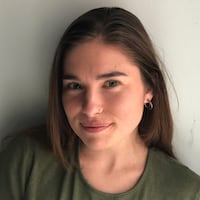“Well deserved,” said Jon Dobney, Greene County Parks and Trails director. “This guy knows his stuff and he’s humble. He knows it cold — but he’s humble about it.”
In 2018, Nolin published a book that has since become instrumental reference material for one of Dayton’s most beloved sites, Huffman Prairie. The book, “Discovery and Renewal on Huffman Prairie: Where Aviation Took Wing” tells the region’s story from before the time when glaciers covered much of what is now Ohio, to the present, and covers Huffman’s historic involvement in the Wright Brothers’ journey to flight.
Now retired, Nolin currently volunteers as president of the Beaver Creek Wetlands Association and lives with his wife Catherine Queener in their Washington Twp. home.
As a retired Daytonian, what made you want to take on the responsibility of becoming president of the Beavercreek Wetlands Association?
💐 “I helped start the group in 1988. They have done so much to protect, care for, and interpret an outstanding natural resource in our region. I guess I’ve always cared about living things and want the beautiful diversity of life native to our area to continue to have places to thrive where people can enjoy and learn about this heritage.”
Credit: Photo Courtesy of Wright State U
Credit: Photo Courtesy of Wright State U
What does a wetland network like the one in Greene County do to benefit the Miami Valley region as a whole?
💐 “Wetlands harbor rare plants and animals, reduce flooding by protecting floodplains, keep pollutants from entering our underground aquifers, filter runoff from farms and cities; they pull carbon out of the air and store it in the ground (helping with climate change). Their beauty is inspiring and good for the soul.”
Is there any comparable wetland network nearby? Is it very common for a Midwest region like the Miami Valley to be home to so many wetlands?
💐 “It is not common, and I don’t know of any comparable ones in the region. Continental glaciers were especially generous to the Miami Valley with their deposits of sand and gravel. These deposits contain cold, clean water that moves and flows. In many places, this water supported groundwater-fed wetlands. Nearly all were long ago drained and put to the plow, but much of the large corridor of wetlands in the Beaver Creek Valley survived. The Beaver Creek Wetlands Association was formed in 1988 to protect this resource, and to call attention to its value to local residents. There are other ancient wetlands protected in the Miami Valley, like Cedar Bog in Champaign County, and Gallagher Fen State Nature Preserve in Clark County, but none that have such a long connected corridor of intact wetlands like the Beaver Creek Wetlands. The corridor is over 15 miles long.
What have been some of the biggest undertakings by BWA in the past few years? How did those efforts turn out?
💐 “BCWA recently completed 50-acre restoration along Beaver Creek, in partnership with Beaver Creek Township. The project was funded by the Clean Ohio Green Space Conservation Fund with a grant of $82,500.00. ... It is very hard to restore a piece of damaged or destroyed wetland, but it can be done. In this one, we had to eliminate the invasive species in the wetland and replace them with a diversity of native species that have a chance of establishing a permanent cover. So far it looks great, but time will tell how it does.
One year ago BCWA hired a talented young Executive Director, Blythe Hazellief, to help us to implement our new vision and increase the awareness and membership of our group.
The new vision I spoke of is the Spotted Turtle Trail. Most of the protected wetlands are not accessible to people. This hinders our ability to monitor, care for, and appreciate the wetlands. The idea here is, working with our partners, to connect the small wetland trails together into a corridor of trails and boardwalks 15 miles long. It is a big project, but one that will really make the Beaver Creek Wetlands a regional conservation resource.”
Why should people care about protecting and supporting wetlands, especially those right in our backyard?
💐 “It has been noticeable in local parks that attendance and use is up in this time of COVID-19. People need the outdoors to experience the restorative benefits of contact with nature, especially now. It puts them in touch with their natural heritage, something that has been here far longer than our state or country. Once someone becomes aware of the beauty and complexity of this heritage, they are inspired to protect it, for people as well as all the other living things there. Protected open spaces increase the value of adjacent land because people want to be near them.”
Besides the wonderful, diverse outdoor spaces in the Miami Valley, what do you appreciate about living in the Dayton area?
💐 “My wife and I are totally devoted to the Dayton area. The natural beauty, seasonal changes, overall weather, and low cost of living are all reasons.”
Credit: Photo Courtesy of Wright State U
Credit: Photo Courtesy of Wright State U
About the Author

